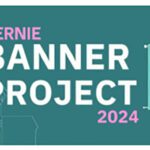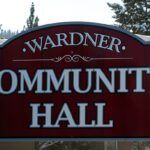Home »

Small change to local electoral districts suggested
Small changes are proposed in the size of the Columbia River-Revelstoke and Kootenay East electoral districts in the recently completed Electoral Boundaries Commission’s (EBC) final report.
Attorney General Suzanne Anton Oct. 28 introduced Bill 42, the EBC final report, which maintains the number of electoral districts in rural and northern B.C. and creates two new districts in the Lower Mainland.
The independent commission presented its report to government in September, and last week the Legislative Assembly voted to adopt its proposals.
Among them, the Kootenay East now includes a portion of the Fort Steele-Bull River area, formerly located in the Columbia River-Revelstoke.
Other changes suggested
– Increasing B.C.’s electoral districts to 87 from 85, with new ridings in Surrey and Richmond/New Westminster to reflect growing population in these areas.
– Preserving current districts in the North, Cariboo-Thompson and Columbia-Kootenay regions, to ensure citizens in less-densely populated, yet geographically large, districts can be effectively represented by their MLAs.
Boundary changes to 48 districts, including substantial changes in the Fraser Valley, Hope/Princeton and Comox Valley/mid-Vancouver Island regions.
The EBC undertook province-wide consultations in developing its recommendations, which, if the amendments are passed, will take effect for the 2017 and 2021 provincial general elections.
“The work of the Electoral Boundaries Commission has resulted in recommendations that provide for both equal and effective representation in British Columbia. Ours is a province with dense and growing urban areas, and more-remote northern and rural regions, and we must ensure all British Columbians are represented appropriately. These changes today are identical to those in the commission’s report and are a result of significant input from the many British Columbians who participated in this important process for democracy in B.C.,” stated Anton.
The Electoral Boundaries Commission Act requires that an independent three-member commission be appointed within one year after every second provincial general election.
 “The third defined region, Columbia-Kootenay, is a geographically large but sparsely populated area made up of four electoral districts: Columbia River-Revelstoke, Kootenay East, Nelson-Creston and Kootenay West,” the EBC report notes.
“The third defined region, Columbia-Kootenay, is a geographically large but sparsely populated area made up of four electoral districts: Columbia River-Revelstoke, Kootenay East, Nelson-Creston and Kootenay West,” the EBC report notes.
“We were told that the electoral districts in this region are difficult to represent due to the physical geography and challenging transportation routes. Despite these challenges, submissions and presentations from residents of the Columbia-Kootenay region indicated satisfaction with their electoral boundaries and the majority indicated there are no significant changes that could provide more effective representation. We propose no changes to the Kootenay West or Nelson-Creston electoral districts and a small change to the boundary between Kootenay East and Columbia River-Revelstoke.
“At our public hearing in Cranbrook we were advised of an issue southeast of Cranbrook where the use of the Kootenay River as an electoral district boundary has the consequence of placing communities on either side of the river, that have close ties to one another and to Cranbrook, in different electoral districts. Students from Wardner on the west bank and Bull River and Fort Steele on the east bank attend the same secondary school in Cranbrook. However, as Wardner is in Kootenay East and Bull River and Fort Steele are in Columbia River-Revelstoke, young people in this area don’t have a shared political experience and some believed this led them to be less likely to participate in the electoral process.
“By using the East Kootenay Regional District Electoral Area C and the Southeast Kootenay School District boundary in this area, these towns east of Cranbrook will be included in the same electoral district (Kootenay East). Following this boundary also has the effect of moving a small area around the airport west of Cranbrook into Kootenay East from Columbia River-Revelstoke. While these changes affect only a small number of people, it will provide more effective representation for these communities,” the report stated.
Columbia-River Revelstoke has the smallest population of the four electoral districts in the Columbia-Kootenay at 31,907 but has an area more than three times the size of the other three areas at 37,704 square kilometres.
In comparison, the Kootenay East has 40,466 people living in a 13,210 sq. km area.
The largest population of the four ridings is in Kootenay West (41,302), in an area of 12,009 sq. km. The Nelson-Creston riding has 36,907 residents and covers 13,212 sq. km.
See the EBC final report HERE.
e-KNOW







